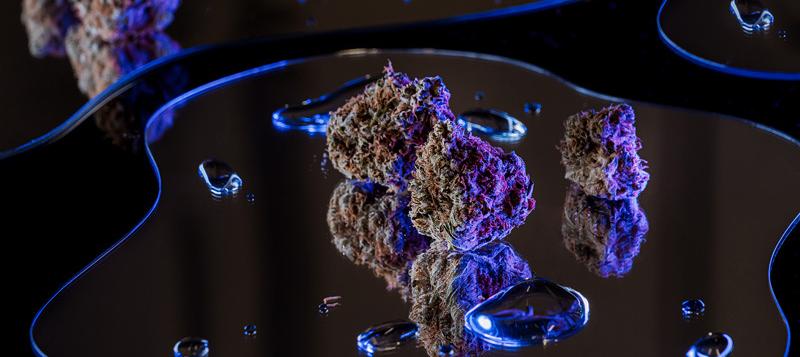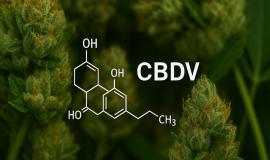Terpenes vs. Cannabinoids: What’s More Important for Effects?
Are terpenes or cannabinoids more important for cannabis effects? Let’s explore how these compounds work together to shape your experience.
Terpenes vs. Cannabinoids: What’s More Important for Effects?
When choosing a marijuana strain, most people focus on THC content or whether it’s indica or sativa. But cannabis effects are more complex than just cannabinoids. Terpenes, the aromatic compounds responsible for scent and flavor, play a major role in shaping how a strain feels. And beyond that, flavonoids also contribute to the overall experience.
So, which is more important — cannabinoids or terpenes? Let’s dive into how these compounds work together to influence your cannabis experience.
Cannabinoids: The Power Players of Cannabis
Cannabinoids are the active chemical compounds in cannabis that interact with the endocannabinoid system (ECS), helping regulate mood, pain, sleep, and more. Each cannabinoid affects the body differently, depending on how it interacts with CB1 and CB2 receptors in the brain and immune system.
Major Cannabinoids in Cannabis:
- THC (tetrahydrocannabinol) – The primary psychoactive compound in cannabis, THC binds to CB1 receptors in the brain, producing euphoria, relaxation, and altered perception.
- CBD (cannabidiol) – A non-psychoactive cannabinoid known for its potential to promote relaxation, counteract THC’s intensity, and support overall well-being.
- CBG (cannabigerol) – The precursor to THC and CBD, often called the "mother of all cannabinoids." It may help with focus and clarity.
- THCV (tetrahydrocannabivarin) – Structurally similar to THC but with unique effects. In lower doses, THCV may provide energy and appetite suppression.
- CBC (cannabichromene) – Less known but increasingly studied, CBC may work alongside THC and CBD to enhance overall effects.
- CBN (cannabinol) – A mildly psychoactive compound that forms when THC degrades. It is often associated with relaxation and sedation.
While cannabinoids directly impact how cannabis makes you feel, they don’t act alone—terpenes play a major role in modulating and enhancing their effects.
Terpenes: The Unsung Heroes of Cannabis
Terpenes are the aromatic compounds found in cannabis and many other plants. Beyond just contributing to a strain’s flavor and aroma, they interact with cannabinoids to influence how a strain feels.
Common Terpenes and Their Effects:
- Myrcene – Found in mangoes, hops, and basil, myrcene is associated with deep relaxation and couch-lock effects. It’s often found in indica strains. Also noted for helping the absorption of other terpenes.
- Limonene – A citrus-scented terpene known for its mood-boosting and stress-relieving properties. Strains with high limonene content tend to feel more uplifting.
- Pinene – Common in pine trees and rosemary, pinene may enhance mental clarity and alertness while counteracting some of THC’s sedative effects.
- Linalool – A floral terpene also found in lavender, linalool is associated with calming, soothing effects and is often present in indica-dominant strains.
- Caryophyllene – A unique terpene that also acts like a cannabinoid, binding to CB2 receptors and possibly playing a role in relaxation. It has a spicy, peppery scent.
- Humulene – Found in hops and coriander, humulene is often associated with appetite suppression and earthy, woody aromas.
- Terpinolene – A less common terpene with fresh, herbal aromas, terpinolene is often found in energetic, creative strains.
Terpenes interact with cannabinoids in a phenomenon known as the entourage effect, helping to fine-tune and shape how cannabis affects the mind and body.
The Entourage Effect: Why Cannabinoids, Terpenes, and Flavonoids Work Together
Rather than working in isolation, cannabinoids and terpenes create a synergistic effect—each compound enhances or modifies the effects of the others. This is known as the entourage effect.
For example:
- THC + Myrcene = More sedating, body-heavy relaxation.
- CBD + Linalool = A more calming, stress-relieving experience.
- THCV + Limonene = A more uplifting and energizing effect.
But there’s more to cannabis than just cannabinoids and terpenes—flavonoids also contribute to the entourage effect.
What Are Flavonoids?
Flavonoids are plant compounds that influence color, aroma, and taste. In cannabis, flavonoids help shape the unique characteristics of each strain. While they don’t have direct psychoactive effects, some research suggests they may contribute to cannabis’s overall impact.
So, What’s More Important—Terpenes or Cannabinoids?
It’s not a matter of cannabinoids vs. terpenes—both are essential to understanding how a strain will feel.
- Cannabinoids determine the general effect (psychoactive vs. non-psychoactive, relaxing vs. energizing).
- Terpenes fine-tune and enhance the experience, adding depth and variation.
- Flavonoids contribute to aroma, flavor, and potential additional effects, rounding out the full cannabis profile.
If you’re choosing a strain, don’t just look at THC percentage — pay attention to the full cannabinoid and terpene profile to get the experience you’re looking for.
Final Thoughts
The next time you shop for cannabis, go beyond just THC content or indica vs. sativa labels. The best way to choose a strain is by considering the full spectrum of cannabinoids, terpenes, and flavonoids.
Looking for premium, pesticide free, and terpene-rich cannabis? Explore the selection at Silver Stem Fine Cannabis — where we grow our own!
Health Disclaimer
The information provided in this article is for educational purposes only and should not be taken as medical advice. Always consult with a qualified healthcare provider before using cannabis, particularly if you have pre-existing conditions or are taking medication.






















